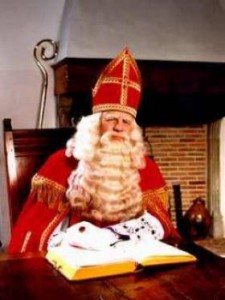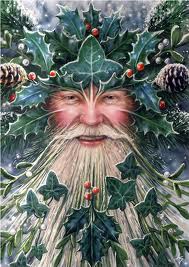This question comes from my daughter year after year and I give her the usual obtuse responses – usually culminating in her frustrated: “Well do YOU believe in Santa??” – to which I use my standard reply “I believe in the SPIRIT of Santa and what he represents”. With a roll of the eyes and a pre-pubescent humph she turns away from me in disgust to try again next year.
But this year, in addition to the usual question, she regaled me with stories from kids at school – including the kicker that Coca-Cola created the modern image of Santa Claus. This led me to embark on a search for origins. And it was an interesting search indeed.
It’s true that people need answers – we want definite responses to when, where, why, and who and unfortunately with an evolutionary figure like Santa this just is not possible.
First off, let’s debunk the myth that Coke created the modern image of Santa Claus. See Snopes for an explanation of this myth.

Secondly, Santa Claus is not a Christian figure – though it is believed he evolved from the 4th Century Christian Greek Bishop, St Nicholas, famous for his generous gift-giving – and it is generally believed that he has become a conglomeration of beliefs and traditions across the centuries to have evolved into what we now regard as “Santa Claus”.
The name Santa Claus is generally accepted to to have come from the Dutch Sinterklaas, who is generally celebrated on St Nicholas’s Eve (5 December), or the Name Day of the Greek Bishop Saint Nicholas on 6 December, who is patron saint of children. Good and bad played important roles in the St Nicholas’s Eve feasts of the Middle Ages: good is rewarded; evil is punished. This has continued into current traditions.
It is believed that in the 19th Century the images of Sinterklaas delivering gifts via chimney and riding the rooftops on a grey horse were introduced by Jan Schenkman in his children’s book Saint Nicholas and His Servant.
Dutch children often leave a shoe by the fireplace – or the door in houses with no chimney – holding hay or a carrot for Sinterklaas’s horse, with candy or a small present being left in exchange for their kindness.
The Dutch brought their traditions, rituals and images with them to the Americas which is how the imagery developed in that region.
Interestingly the first modern American description of Santa Claus appeared in an anonymous poem titled Account of A Visit from St Nicholas. This poem, published on December 23, 1823 in The Sentinel, is better known as The Night Before Christmas.
Santa Claus is generally depicted as a stately elderly father-like figure with white hair and a long beard – usually carrying a staff and/or a book (containing the names of all the good and bad children). This image is common across cultures and religions to depict various gods and mythical figures including the Christian god, the pagan gods Zeus and Odin, and Father Winter (the spirit of winter solstice) from the British Isles.
The Dutch tradition of leaving hay or a carrot for Sinterklaas’s horse, a shoe by the fireplace, and his image bears a striking similarity to pagan customs of the Germanic and Celtic people.
Christmas takes place at the time of the pagan celebration of Yule – or the Winter Solstice – in the northern hemisphere. Special reverence was placed on this period of time in many societies of pre-Christian Europe.
For example, in Ancient Rome, the Feast of Saturnalia took place in late December and involved gift-giving, feasting and decorating homes with evergreen clippings, and living trees with pieces of metal and images of gods.
Evergreen trees are revered because they do not “die” by losing their leaves during winter – and were thought to thus house a tree spirit of everlasting life.

December was also the time for special rites associated with Dionysus – known in some pagan traditions as The Green Man and associated with renewal, rebirth and revelry, symbolising the triumph of life over death/winter.
Odin, an important god to Germanic peoples, was said to lead a hunting party through the sky at Yule, riding a grey 8-legged horse, Sleipnir (said to be the inspiration for the eight reindeer of Santa’s sleigh) who could leap great distances. Children would place their boots filled with carrots, straw or sugar near the chimney for Sleipnir, and they were rewarded for their kindness by replacing Sleipnir’s food with gifts or candy.
Yule itself is a celebration of the birth of the Sun and the promise of a return to the light. The proximity of Christmas then to Yule is likely no accident as it enabled pagan peoples to easily assimilate existing traditions into the new Christianised beliefs.
So then … is Santa real? I believe so – perhaps not as a flesh and blood man riding around in a reindeer-powered sleigh but certainly the spirit and intent of the season is very real: renewal, rebirth, a time for hope, for sharing, giving and spending time with loved ones. There’s nothing more real than that.
Resources:
Snopes – The Claus That Refreshes
History of Santa Claus in America
Wikipedia:
